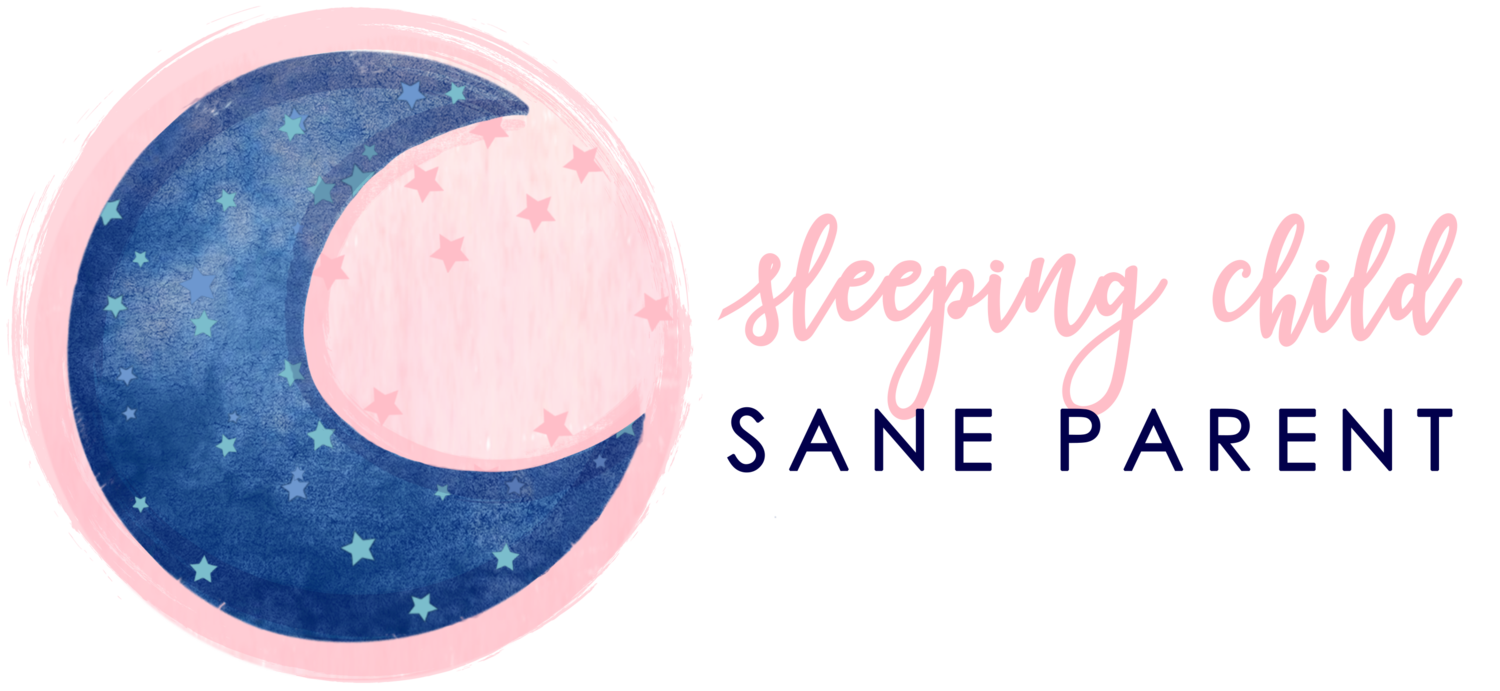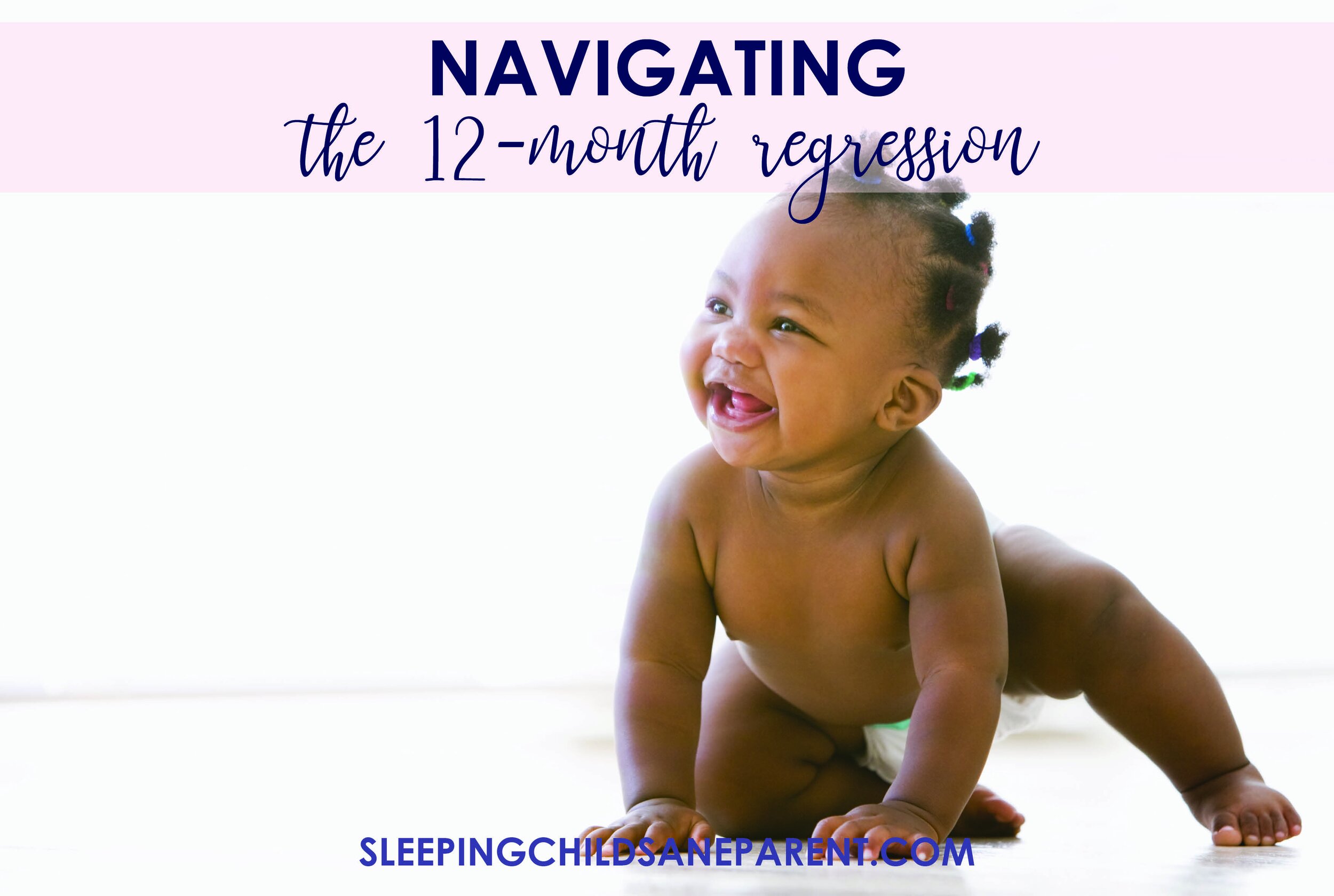I get questions all the time about various sleep regressions, so I decided it’s time to explain them all in a blog mini-series! But first off . . .
What is a Sleep Regression?
When Baby was sleeping well, and now she’s not, she might be going through a sleep regression!
Some regressions are a result of outside factors, and are typically short-lived, unless parents get over-involved. These minor regressions might be caused by teething, moving, or getting a new sibling, to name a few. Click for more information about what to do about these types of regressions.
Other regressions are a result of internal factors, like developmental milestones and/or changing sleep needs. Those are the ones we’ll be discussing in this mini-series.
It’s no wonder so many sleep regressions occur — Baby is experiencing constant change in multiple ways! Knowing what to expect can help you navigate regressions more seamlessly.
When does the 12-month regression occur?
All regressions have a number in them, but each regression actually has a little more wiggle room than that.
The 12-month regression typically happens sometime between 10 and 14 months.
What does the 12-month regression look like?
You might be in the 12-month regression if your child is having trouble with naps (skipping one or both, taking a while to fall asleep, taking short naps), waking in the night (especially if Baby was previously sleeping through), waking up in the early morning (prior to 6am), or exhibiting extra fussiness (because sleep is so erratic!).
What causes the 12-month Regression?
Like the 8-month regression, the 12-month regression is generally caused by an increase in brain/physical development, along with changing sleep needs.
But what does that really mean?
brain development and new physical skills
Baby continues to gain new physical skills every day, like pulling to stand, cruising along furniture, and taking her first steps. Baby will also begin adding new words to her vocabulary and continue to make more connections with all the things and people around her. Baby will love to practice all her new skills, even when she’s in bed!
When Baby practices all her skills in the crib, we may be tempted to engage in a game of “lay the baby down,” one that she’ll be all to happy to play — over and over and over again! Thus, we reinforce the bad sleep behavior.
changing sleep needs
In this timeframe, Baby’s sleep needs will decrease from ~15 hours of total sleep to ~14 hours of total sleep, which can wreak havoc on her predictable sleep schedule if you don’t know how to address the changing sleep needs! She may take a long morning nap and then skip her afternoon nap, or she may skip her morning nap and then need her afternoon nap too soon, thus messing up bedtime! Or, she may even take two long naps, but make up for missed daytime awake time by having a party in her crib in the middle of the night.
All of the new chaos with Baby’s sleep may leave you wondering if it’s time to switch to one nap permanently; however, I highly discourage making this transition too early! I promise — you’ll be left with many MORE sleep problems if you make the transition too early.
So what can you do?
How to Get Good Sleep Again
Here’s what to do instead of the above options!
Step by Step
First off, if Baby’s sleep wasn’t great leading up to 12 months, you’ll need more than the following simple tweaks to get things on track. My 9-17 month Dream Key will teach you everything you need to know about setting the stage for good sleep.
If Baby WAS sleeping well and this is truly a regression, here’s what to do.
1 - Just like with the 8-month regression, we need to give Baby plenty of opportunity to practice her new skills. Try to limit the time you “contain” baby (with an exersaucer, high chair, or car seat), and instead allow Baby tonssss of time to move around on the floor! We’d much rather Baby practice all her new skills outside the crib than inside the crib so that we can prioritize sleep (rather than playtime) in the crib.
2 - Maintain your usual routine for leaving Baby in her crib at naptime and bedtime. Even if she’s awake and trying to party, we don’t need to join the party! It’s still sleep time, and we want her to remember that. There’s no need to re-introduce night feeds (we can actually say goodbye to those for good by 9 months!) or middle-of-the-night cuddle sessions. Nighttime is for sleeping, and by leaving Baby alone when she’s awake in the night, we help remind her that it’s still time to sleep.
3 - It’s time for a schedule adjustment! Even though Baby now needs less overall sleep, that doesn’t mean she’s ready for fewer naps! I recommend holding onto two naps until as close to 18 months as possible in order to ease the transition and maintain good sleep. However, in order to hold onto two naps, you’ll need to start placing limits on nap sleep and night sleep in order to maintain a similar and predictable schedule from day to day. I go over how to do this in my blog post on nap transitions. My 9-17 Month Dream Key also covers this transition in detail, along with everything else you need to know to develop good sleep skills and a good sleep schedule.
Need help navigating this regression or completely overhauling your little one’s sleep? Learn more about my Dream Keys and one-on-one consultations here.


